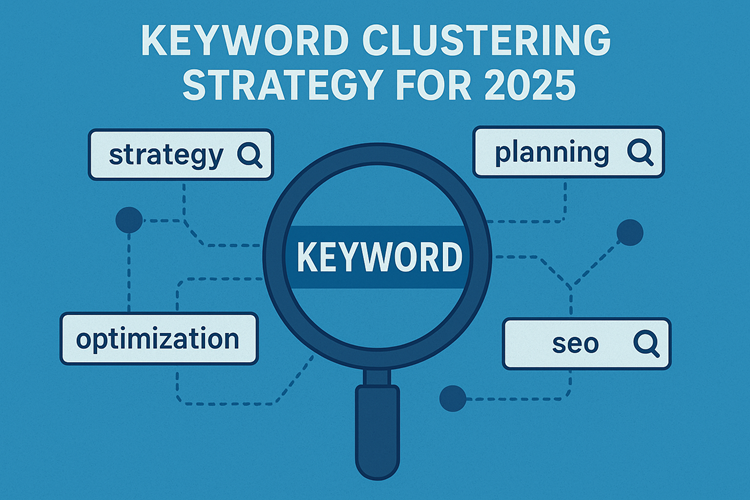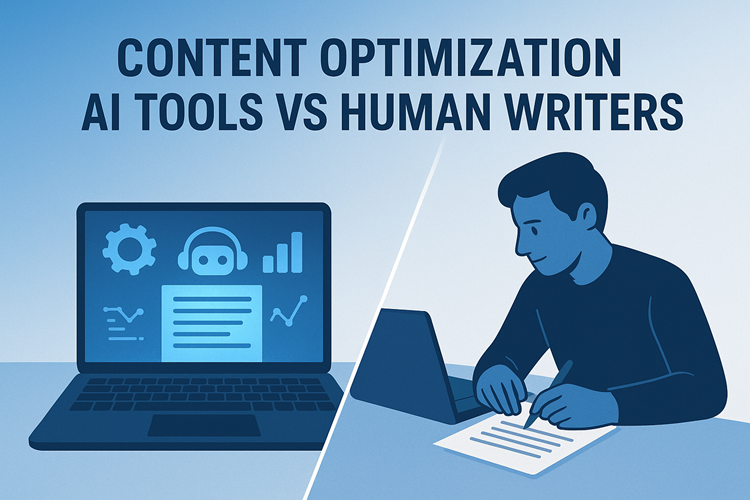Keyword Clustering Strategy for 2025

What is Keyword Clustering?
Keyword clustering is the method of assigning related keywords that have the same search intent or topic. Rather than building dedicated pages for each keyword variation, those are combined into one, thorough piece of content. This technique allows your content to rank for more than one keyword simultaneously and builds your topical authority.
For instance, rather than producing one page for “best SEO tools,” “top SEO software,” and “free SEO tools,” you can develop a single in-depth guide that addresses all of these questions. Today, Google’s algorithms are smart enough to detect context and semantic relationships among words — so a well-user-focused cluster does much better than scattered keyword pages.
The Importance of Keyword Clustering in 2025
Search engines, they are once again becoming more intent-driven. In 2025, Google’s AI-powered search (as in the Search Generative Experience - SGE) still shares a similar focus on comprehending context for why a user is asking their question. This is to say, but if your content fits into a well defined cluster, there’s a good chance it will get featured or rank higher.
Why keyword clustering is more important than ever And here are the key reasons why you need to absolutely start using it today:
Enhances topical authority: When you cover all aspects of a topic with well-organized clusters, Google trusts your site as being an authority on the subject.
Increases keyword rankings on several terms: Just one blog can rank for dozens of keyword variations in your industry, providing greater exposure.
i- Better for Users: users prefer one detailed page to lots of small and repetitive pages.
Helps in internal linking: Clusters tend to create better structures for internal links thereby aiding crawlability and engagement.
How to establish a keyword clustering strategy in 2025
So now you should be familiar with the power of keyword clustering, let’s take a look at how you go about building your own strategy.
Step 1: Start with Widespread Keyword Research
Begin with a core topic that relates to your niche or goal — such as “digital marketing.” Leverage Ahrefs, SEMrush, Ubersuggest and Google Keyword Planner to gather hundreds of keyword variations related to your business sewed on. Also, include long-tail keywords, question type queries, and also synonyms.
Step 2: Identify Search Intent
With your keyword list at the ready, organize them by search intent — if a user is searching for information, products, comparisons or solutions.
Informational (meaning): “What does digital marketing mean?”
Search intent: “Best digital marketing platforms” *Please break this down any way you like; you may provide a response in sections or separated by bullet points. *Bonus if they mix it up with some of the other tactics I mentioned, which we totally definitely haven't done here.
Transaction Intent: “Sign up for digital marketing course”
It should help you determine what type of content is a better fit: a blog post, landing page, product page or guide.
Step 3: Cluster Related Keywords
Now, you’ll want to organize your keywords into smaller groups of related topics. For instance:
Cluster 1: SEO tactic, keyword optimization, link building
Cluster 2: Looking out for SMMA, Content creation, engagement hacks
Cluster 3: Email marketing automation tools drip campaigns
Every cluster should include one pillar page — a core topic — with multiple supporting articles that are more detailed on subtopics.
Step 4: Develop Pillar and Cluster Content
Your pillar page is going to serve as the hub, providing a comprehensive summary of the topic. Advocate pages should delve into a more specific subtopic and be linked to from the pillar page. This makes a nice, clear hierarchy, which is what search engines like.
For instance, if your pillar page is “Complete Guide to Digital Marketing,” your sub-pages would be like:
“Effective SEO Strategies in 2025”
“Top Social Media Trends for Business”
“Email Marketing for Conversions: How to Write a Profit-Pulling Email Series”
Every article should connect to others of the same cluster, creating a good network.
Step 5: Tweak and Tune, Also Known as Monitor Performance
Once your cluster is live, hack your titles, headers and internal links with those keyword targets in a natural way. In conclusion, keep an eye on performance using tools such as Google Search Console and see which clusters drive the most traffics.
Keep your content up-to-date — SEO 2025 prizes fresh, quality updated content.
Pro Tips to Help You Succeed with Keyword Clustering in 2025
Use AI tools prudently: Platforms such as ChatGPT and SurferSEO could make the process to find keyword relationships much faster.
Look for semantic SEO: It’s not about repeating keywords, it’s all about synonyms, variations and contextually related terms.
Embrace voice search optimization: A wealth of keyword clusters are derived from these conversational queries used in voice search these days.
Benchmark topical depth: Make sure your cluster indeed serves as the ultimate resource on this topic and not just some random angles of it.
Final Thoughts
Keyword clustering isn’t just an SEO buzzword in 2025 — it’s the foundation of a powerful content strategy. By organizing your content around topics, not isolated keywords, you’ll get higher ranking and more organic traffic.
Once you learn how to do it, however, you can create content that helps your page get ranked higher and stay relevant longer – while still providing value to readers. So regardless of whether you’re just finding your feet in SEO or an accomplished marketing professional, be sure that you start applying keyword clustering now — the future of search depends on it. Get more details visit on www.prayug.com
Top Blog Posts





